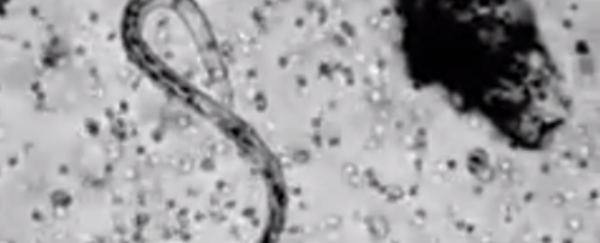
There's a saying - "Whenever you feel sad, just remember that there are billions of blood cells inside your body, and all they care about is you." Sure, it's not exactly true, cells don't actually 'care' about anything, but when you see footage like the video above, it's hard not to be grateful for the multitudes of structures and processes that work tirelessly to ensure that we don't spontaneously implode in a cloud of diseases. White blood cells, in particular, are great at this.
Each drop of a healthy person's blood will contain between 4,500 and 10,000 white blood cells per microlitre (mcL). And if the average human contains between 4.5 and 5.5 litres of blood, that means we've got well over 25 BILLION white blood cells floating around inside us, protecting us from pathogens at every chance they get.
White blood cells are produced inside your bone marrow to be stored inside your blood and lymphatic tissues. And because they don't live very long - one to three days is all they've got - they have to remain super-effective at what they do at all times. When a pathogen enters the body, it will stimulate the production of lymphocytes - a type of white blood cell that can make up 20 to 40 percent of your total white blood cell count. These lymphocytes then produce antibodies that 'stick' to the surface molecules of the pathogen, called antigens, and destroy them over the course of several days.
Another type of white blood cell, the phagocyte, then takes over and devours both the incapacitated pathogens, and any healthy ones that are leftover. It's an incredibly slick operation, as you can see above.
Who would have thought that the response of our white blood cells to a parasite would look so similar to a hoard of ants dismembering a gecko carcass with the surgical precision of, well, a surgeon? A team of very tiny surgeons:

Thanks, white blood cells. We owe you one.
Source: Digg
